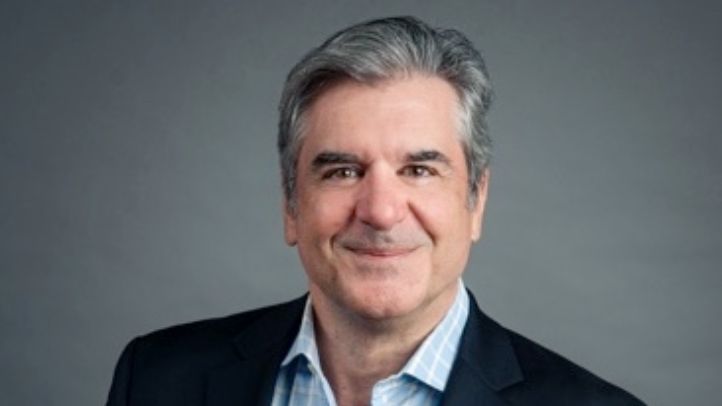AirCarbon became the first exchange to offset its own emissions from the date of its inception in March 2019 to March 2022 (based on projected emissions). HC Insider speaks to Bill Pazos, Co-founder of AirCarbon Exchange, to find out about the company’s journey towards this achievement.

Using blockchain technology to accelerate the efficiency of carbon trading, Singapore’s AirCarbon Exchange has become the world’s first carbon negative trading platform, beating the main exchanges in London and New York. We speak to Bill Pazos, Co-founder and Managing Director of AirCarbon Exchange, to better understand the carbon market.
HC Insider: How has the carbon market evolved since you joined in 2000?
Bill Pazos: The market was launched in 1992 following the Earth Summit, when the United Nations recognised climate change as a serious issue. It was driven by the United Nations Framework on Climate Change, which developed a global trading scheme, the Clean Development Mechanism (CDM). (The CDM allowed a country with an emission-reduction or emission-limitation commitment under the Kyoto Protocol to implement an emission-reduction project in developing countries). Countries around the world agreed on a blueprint to trade carbon credits. Back then, there were two distinct types of countries. You had Annex 1 countries, which were the developed countries, and non-Annex 1 countries. Annex 1 countries, such as the US, were mainly responsible for climate change given that a lot of the greenhouse gases and carbon in the atmosphere were a result of the industrial revolution that occurred in these developed economies. Carbon projects in emerging countries, such as China, India, and Brazil, could sell carbon credits to Annex 1 countries. Carbon trading became more popular in Europe than the US when George W Bush was elected president in 2001 and his administration moved away from the Kyoto Protocol. The global financial crisis in 2008 also affected the climate change conversation. Today, there are two different markets, – one that is driven by the UN and one that is driven by corporate social responsibility and ESG requirements.
HC Insider: What is the situation today?
BP: When we had the global financial crisis, it created a seismic economic event and as a result the political will around the world to tackle climate change faded away. This time around, we have the equivalent of an economic seismic event in the form of a pandemic. It’s even more serious than the 2008 financial crisis but we’re coming out stronger from a climate standpoint. Carbon prices since January have actually doubled and we have seen a lot of interest in our exchange. Transactions are going up every day.
HC Insider: Do you think some companies entering carbon trading are prioritising profit over sustainability?
BP: I think that is one of the biggest misconceptions and it is fuelled by a lot of different opinions. I think one of the biggest problems with the carbon market is that people are comfortable with the word ‘carbon’, but they are uncomfortable with the word ‘market’. The entire construct of a carbon market is to allow the market to find the most inexpensive place to offset a ton of carbon, and once they’ve done that, then the market will go to the second least expensive place, and so on. Another criticism is that these carbon credits companies are not doing the most they can to reduce their carbon emissions – they’re just going out and buying credits. As more and more companies are ring-fenced and forced to buy carbon credits, the price of carbon will go up. What you need is a global uptake in creating a capsule that is meaningful.
HC Insider: Recently we’ve seen Trafigura and Vitol set up environmental products trading desks and there’s a huge demand for talent in Asia. What are the long-term opportunities for these companies?
BP: The government in Singapore has focused its attention on the primary market – bringing carbon projects to market. This will, if successful, create a steady supply of carbon credits. But the trading desks that are being set up within these firms need standardisation in the market in order for them to flourish. You cannot trade carbon credits on a piecemeal basis because every single transaction is different, and you cannot trade tokenised credits around demand to create a fungible asset. The desks that are working in this way are not going to be profitable. The key is to allow the credits to be streamlined into tradeable instruments.
HC Insider: What is the story behind AirCarbon?
BP: We bring the architecture behind traditional commodities, like soybeans, to the carbon markets. You do not trade soybeans individually. They sit in a warehouse and warehouse receipts are created, and it is those receipts that are traded on the exchange. As a result, you’re able to trade high volumes of the product efficiently. We’ve done the same thing with carbon but instead of having a physical warehouse, we’ve created trusts, and in this trust, we put in carbon credits. The first trust that we created is called the CET eligible token. These carbon credits are eligible under the global CORSIA carbon offset reduction fee for international aviation. The aviation industry buys a CET and they are assured that they have a carbon credit that meets the specifications. Then we have other baskets such as Global Nature Tokens and Renewable Energy Tokens that have different requirements. People can now buy carbon credits within seconds as opposed to having to deal with different registries.
We are moving into a carbon constrained world, so I have no doubt that this market is going to scale up and be as big, if not bigger, than a lot of traditional commodity markets.
HC Insider: What is the long-term strategy for AirCarbon?
BP: We’re moving into a carbon constrained world and our concept is relatively simple. We securitise or tokenise carbon credits around market demand. If the market demand is significant, then we create an asset class around it. It’s a very simple model that takes friction out of the market and brings transparency. We’re not brokers, which is very important because there are exchanges out there that are actually brokers and they tend to have an axe to grind. We’re focusing on eliminating friction in order to increase velocity, and with increased velocity, we can make up for the lower fees that we charge. In the future, an IPO or a takeover could be nice, but I’m not married to any particular exit strategy. What we are really focused on is in growing our business. We completed our first trade in January this year and we are now at 87 companies in 25 countries, and that number grows every day. We will be announcing ACX Canada, ACX Abu Dhabi, and we are doing some interesting things in Japan as well.
HC Insider: What is the role of blockchain at AirCarbon?
BP: We use distributed ledger technology (a database that is shared and synchronised across multiple sites, institutions, or geographies, accessible by multiple people) and leverage blockchain architecture to securitize carbon credits into digital tokens, which has a lot of benefits to it. Blockchain has allowed us to create a hybrid, decentralized platform, which mirrors commodity markets and automates the laborious manual processes that are usually involved with OTC carbon trading. We have an immutable record of every single transaction which allows complete traceability to the underlying carbon credit that sits on the exchange. That creates a very straightforward way of ensuring you know what it is you are holding.
One other benefit is that the market tends to trade on a ton-by-ton basis as carbon credits get used more and more to offset emissions in the market. Fractions of tons are going to become necessary, and our infrastructure is ready for that. We’re having conversations with corporates across insurance, transportation and LNG businesses that want to attach carbon to certain activities, but a ton is too much carbon.
HC Insider: What other commodity products might carbon rival in the future?
BP: People are saying that carbon credits should be trading at $200/tonne. If it does, it will become one of the largest markets in the world. We are moving into a carbon constrained world, so I have no doubt that this market is going to scale up and be as big, if not bigger, than a lot of traditional commodity markets. We’re actually in the process of developing a plastics credit. A carbon credit is created if you mitigate a ton of carbon over and above business as usual. If you take that same application to the plastics market and you say I’m going to give you a plastics credit for every kind of plastic that you mitigate over and above business as usual, then you create another tradeable instrument. This is something that we are working on and I think we will probably see that being rolled out in Q3.
HC Insider: What is your view on Singapore as a hub for carbon trading?
BP: There is a lot of impetus being put on carbon markets from all levels by the Singapore government. We’re actually here because Enterprise Singapore gave us a significant grant to get started. Europe is the most advanced carbon trading region in the world, and you’re seeing some really interesting stuff happening around the world. In Colombia, for example, they have a cap-and-trade system where they’re allowing carbon credits from forestry projects to be used to pay for the carbon tax. The same thing is happening in South Africa. I think Singapore will be an important part of that puzzle.
McKinsey recently cited a global private sector taskforce that estimated demand for carbon credits could increase by a factor of 15 or more by 2030, and the overall market could be worth upward of $50 billion. The carbon market has gained huge momentum with the recent entry of several commodity trading houses, similar to what we saw in LNG Trading in 2018, where many companies descended on Singapore to set up third party LNG trading entities.
High demand for front office professionals with carbon/environmental products backgrounds and a shallow candidate pool has meant that talent is scarce and hard to come by. Hiring managers are looking at creative ways of sourcing talent from outside the industry or are faced with high premiums and a fast-moving candidate market. We are anticipating much more growth in Asia carbon markets over the course of 2021 and looking out to 2022 and beyond.
For more information, please contact:
Amelia May, Senior Associate at Human Capital – amay@humancapital.global
Douglas Ferguson, Director at Human Capital – dferguson@humancapital.global

